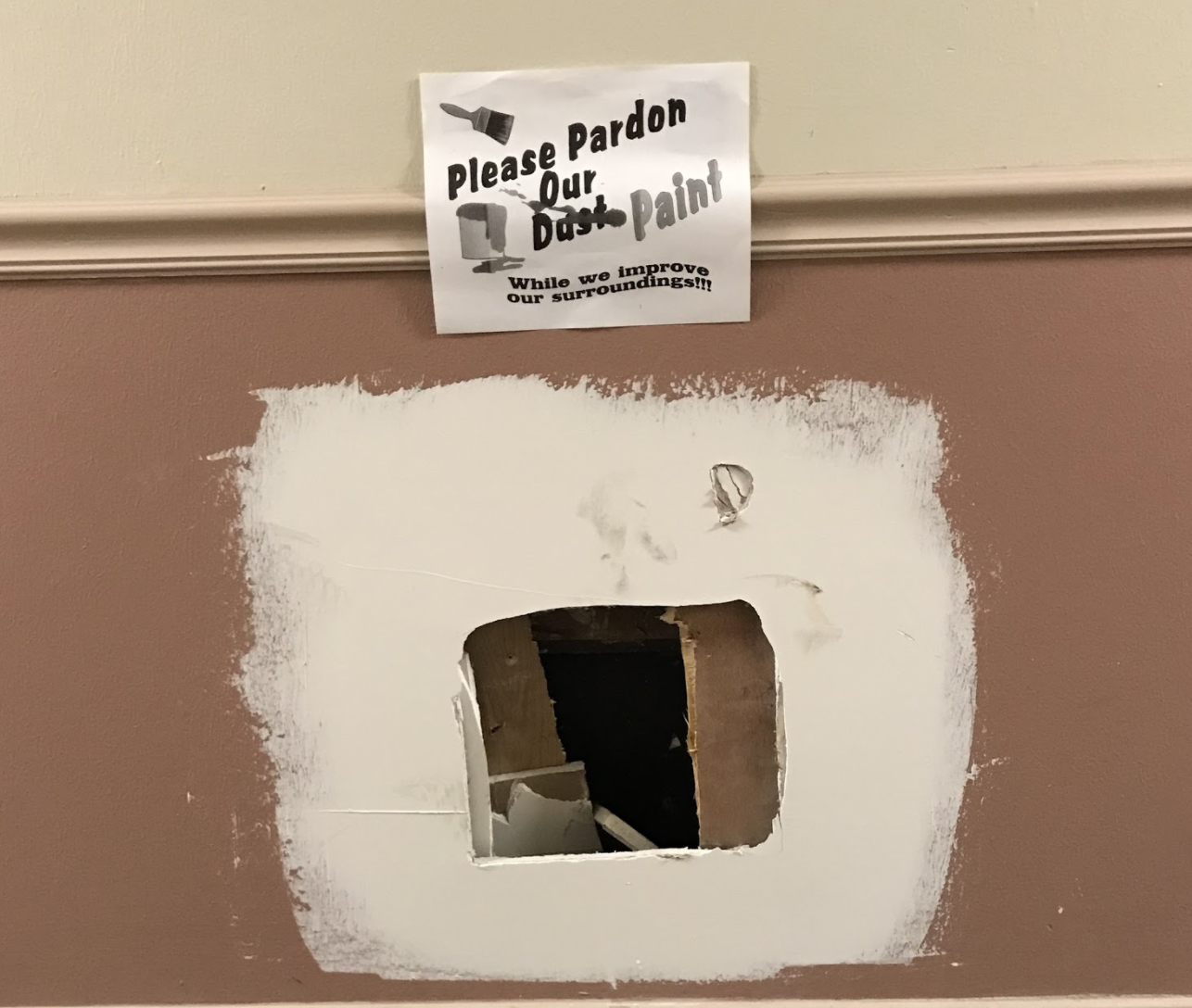
Unidentified individuals recently committed acts of vandalism in two residential halls, Sutton Apartments and Elizabeth Hall, resulting in the distribution of repair costs amongst residents.
The hall directors of Sutton Apartments and Elizabeth Hall, graduate student Brittany Edwards and Jack Allen ’18 respectively, are faced with handling the consequences.
They reported that they were disheartened to witness such destruction where they and other students call their home. Even worse, since no one took responsibility for their actions, they had to charge multiple residents for damages that they did not cause.
Edwards admitted, “It hurts my heart to know that students are engaging in this behavior.” However, the reality is that it may not be the residents; it may be their guests.
One specific problem Sutton Hall experienced was a kick to the wall, which resulted in a hole on the fifth floor right outside a resident‘s door. The cost for repair will be around $200, since the hole is relatively small. Since it was unclear who caused the damage, the cost was split across the residents of the fifth floor. It “comes out to $3.68 for each person,” said Edwards.

This caveat lies in the Housing Agreement that every on-campus Rollins student signs. “Students are responsible for care of public areas and furnishings,” it reads. Public areas are designated as “hallways, stairwells, lounges, kitchens, bathrooms, chapter rooms, study rooms, meeting rooms, recreation areas, pool/pool deck, etc.”
This means that “‘Common-Billing’ charges may be made to residents of an apartment, section, wing, floor or entire building (as appropriate),” continues the Housing Agreement, which Edwards quoted in her email to Sutton residents. Charges will be “divided equally among residents of a particular area.”
Edwards shared that she and the Residential Life staff struggled to decide who should be charged for the damage. Fairness is hard to judge, but they decided it was more reasonable to charge the fifth floor than the whole building. “It’s tragic the way our system of responsibility is set up,” commented Edwards.
When describing the damages in Elizabeth Hall, Allen noted the “RA bulletin boards that have been torn down, dividers in the first-floor bathrooms that have been forcefully ripped from the wall, and an unknown black substance that was left to cement [in] the men‘s bathroom on the second floor.” Also, “the exit sign on the second-floor stairwell was smashed.”
In an email to the residents of Elizabeth Hall, Allen addressed these damages, saying, “The RAs have given their time and effort into creating bulletin boards, decorations and door tags for you all to create a vibrant community.”
Furthermore, the damage affects other individuals besides the students. According to Allen, “The housekeeping staff have had to work extra hours to clean up several of the messes made in our building.”
Edwards and Allen both agreed that this is not a problem at Rollins as a whole. Most community members show consistent respect for their halls.
Edwards and Allen feel that the biggest problem in this situation is that students do not report others, even when they know who caused the damage. Edwards feels that residents’ biggest fear is being titled a snitch. She said that the most common thing people ask is, “If we know anything, it’s confidential, right?”
She tried to remind her residents that reporting others is not tattling, “It’s an act of public service!”
In regard to what occupies students’ worries, she said that they are split about 50/50 between concerns about the actual damage and concerns about being charged for something they did not do.
According to Edwards, some students asked why there are no cameras in the hallways to solve this problem. She explained, “It’s always been a privacy concern.”
There are currently no cameras in the hallways of residence halls because students travel to and from the bathroom in order to shower. Cameras in the hallway would create the effect that “Big Brother’s watching you.”
However, Edwards questions how true that is for a building like Sutton, which does not have communal bathrooms. She commented that it might be a question that could be addressed, but at the same time, “you have to think about how frequent these things occur.”
The one good thing that came out of this ordeal, shared Edwards, was the leadership that she saw among her residents. There were some people “trying to get the responsible person to come forward about their actions.”
If residents could not manage that, some said that they were willing to pay for the cost of the damage. They were even asking some of those who were financially priveleged to make donations to a fund, as some people are not capable of paying.
According to Edwards, there were “so many eyes and ears on our floor dedicated to the Rollins community.”







Be First to Comment